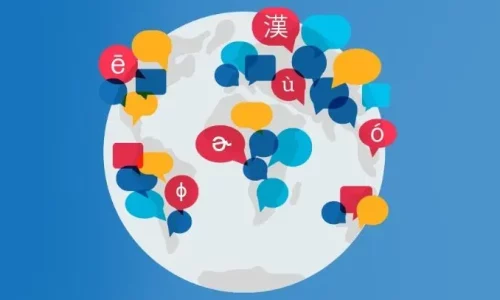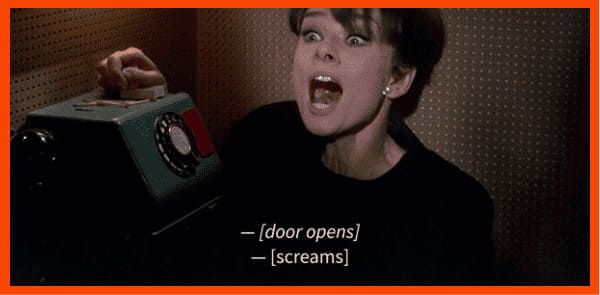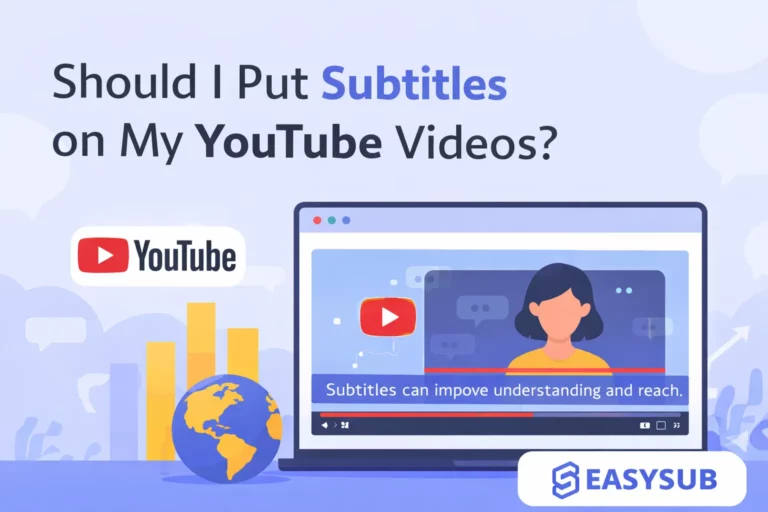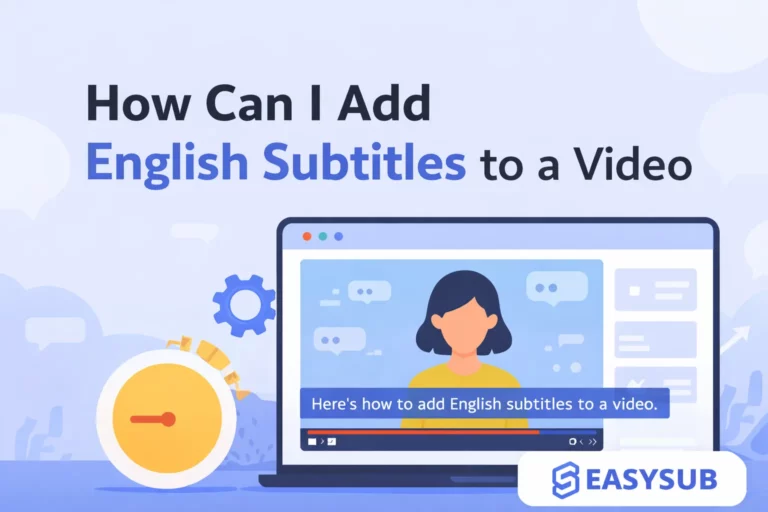今日のグローバル化した動画コンテンツのエコシステムにおいて、YouTubeは世界中のクリエイターと視聴者のコミュニケーションプラットフォームとなっています。YouTubeの公式データによると、再生回数の60%以上は非英語圏の国や地域からのものであり、多言語字幕は言語の壁を打ち破る鍵となります。.
字幕翻訳は、異なる言語背景を持つ視聴者が動画コンテンツを容易に理解できるだけでなく、動画の視聴時間、エンゲージメント率、サブスクリプションのコンバージョンを大幅に向上させます。例えば、スペイン語しか理解できない視聴者でも、動画に正確なスペイン語字幕が表示されていれば、コンテンツの価値を十分に理解することができ、「いいね!」やコメント、さらには動画のシェアをする可能性が高まります。.
目次
YouTubeの字幕と翻訳された字幕の違い
字幕を翻訳する前に、クリエイターは「YouTube 字幕」と「翻訳された字幕」の違いを理解する必要があります。これは、字幕の扱い方、視聴者の体験、動画のグローバルなリーチに影響するからです。.
YouTube字幕(オリジナル字幕)
意味: 動画の元の言語に合わせて作成者が作成したテキスト コンテンツ。通常は動画の音声と 1 対 1 で対応しており、同じ言語を話す視聴者がコンテンツを理解できるようにします。.
目的: アクセシビリティを強化し、聴覚障害のある視聴者や騒がしい環境にいる視聴者がビデオコンテンツを完全に理解できるようにします。.
ソース:手動で入力するか、YouTubeの自動生成機能を使って生成する。
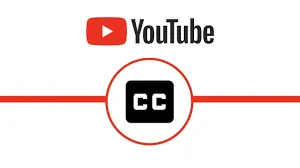
翻訳字幕
意味: 異なる言語背景を持つ視聴者がビデオを視聴できるように、元の字幕コンテンツを別の言語に翻訳します。.
目的: 言語の壁を打ち破り、世界中の視聴者にリーチします。.
特徴: 元の意味を保ちつつも、文化の違いや文脈への適応を考慮する必要があります。例えば、日本語の「いただきます」というフレーズは、英語では「Let's eat」など、直訳ではなく文脈に適した表現に翻訳される可能性があります。.
| 比較の側面 | YouTubeの字幕 | 翻訳字幕 |
|---|---|---|
| 言語 | 動画の元の言語と同じ | 動画の元の言語とは異なる |
| ターゲットオーディエンス | 動画と同じ言語を話す視聴者 | 異なる言語を話す視聴者 |
| 制作難易度 | 主に転写とタイムコード同期 | 正確な翻訳と文化的な適応が必要 |
| 主な目的 | 理解を助ける | 国際的なリーチを拡大 |
なぜ区別するのでしょうか?
- 目標が単に現地の視聴者にとってのビデオのアクセシビリティを向上させることだけであれば、元の言語の字幕で十分です。.
- 国際的な普及が目的であれば、字幕は正確に翻訳され、特定の地域向けにローカライズされる必要があります。.
YouTubeの字幕を翻訳する一般的な方法の比較
| 方法 | 利点 | デメリット | 最適な用途 |
|---|---|---|---|
| 手動翻訳 | 高い精度、文化的なニュアンスが保持される | 時間がかかり、高価 | 専門的なコンテンツ、法律または医療のビデオ |
| 機械翻訳(例:Google翻訳) | 高速、低コスト、使いやすい | 文脈の正確性に欠け、表現がぎこちない | カジュアルなコンテンツ、個人的なプロジェクト |
| AI字幕ツール(例:Easysub) | スピードと高精度を両立し、タイムコード同期とスタイル編集をサポート | 若干の手動レビューが必要になる場合があります | YouTubeクリエイター、教育コンテンツ、世界中の視聴者向け動画 |
YouTubeオリジナルの字幕をエクスポートするには?
YouTube 動画の字幕を翻訳する前に、まず動画の元の字幕ファイル (. .SRT (または.VTT形式)これにより正確なタイムコードが保持され、翻訳された字幕が動画と同期しなくなるのを防ぎます。このステップは、効率的な翻訳に不可欠であるだけでなく、視聴者にとってシームレスな視聴体験を維持するためにも重要です。.
詳細な手順(YouTube Studio に基づく):
- YouTube Studio にアクセスする: YouTube アカウントにログインし、右上隅のプロフィール アイコンをクリックして、「YouTube Studio」を選択します。“
- ビデオを見つける: 左側のメニューで「コンテンツ」を選択し、翻訳したいビデオを見つけます。.
- 字幕管理インターフェースに入ります。ビデオの横にある「詳細編集」アイコン(鉛筆の形)をクリックし、左側の「字幕」オプションを選択します。.
- 言語を選択して字幕をエクスポートします。すでに生成されている元の言語の字幕を見つけて、「その他のアクション」をクリックします。“
- 字幕ファイルをダウンロードします。エクスポート形式 (推奨: .SRT または .VTT) を選択し、ローカル コンピューターにダウンロードします。.
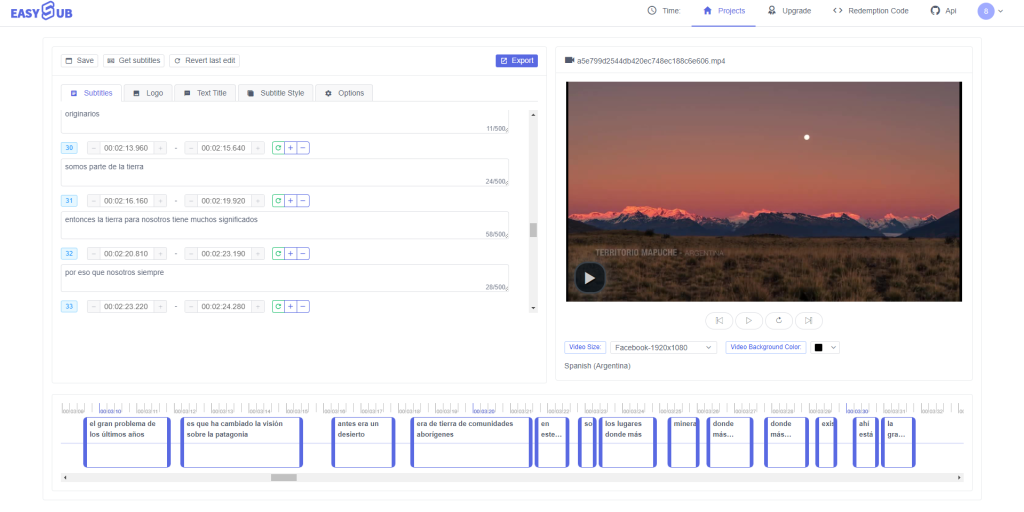
AIツール(Easysub)を使ってYouTubeの字幕を翻訳する
元の字幕ファイルを入手して確認した後、次のステップは、それを効率的かつ正確にターゲット言語に翻訳することです。AIツールを使用すると、手動で文章ごとに翻訳するのに比べて、大幅に時間を節約できるだけでなく、字幕の同期とフォーマットの整合性も確保できます。字幕生成と翻訳に特化して最適化されたAIツールであるEasysubは、多言語字幕を制作したいYouTubeクリエイターに最適です。.
Easysubを使ってYouTubeの字幕を翻訳する手順
ステップ1:Easysubに登録してログインする
訪問 イージーサブ 公式サイトで「登録」をクリックし、メールアドレスを使用してサインアップするか、Google アカウントで直接ログインしてください。.
ステップ2: オリジナルの字幕ファイルをアップロードする
「プロジェクトを追加」をクリックして、最近エクスポートした .SRT または .VTT ファイルをアップロードするか、字幕付きのビデオファイルを直接アップロードします。.
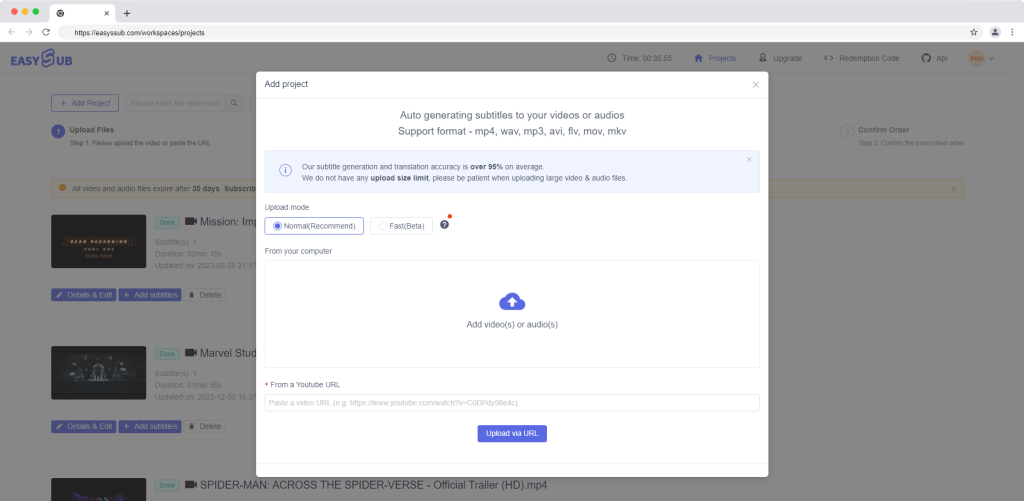
ステップ3: 翻訳言語を選択する
字幕処理インターフェースで、元の字幕言語(例:日本語、英語)と翻訳先の言語(例:英語、スペイン語など)を選択します。.
ステップ4: AI翻訳を開始する
Easysub は、ASR (音声認識) + NLP (自然言語処理) + 機械翻訳モデルを使用して、タイムコードとの正確な同期を維持しながら、数秒から数分で字幕翻訳を完了します。.
ステップ5:手動での微調整とプレビュー
Easysub 編集インターフェースでは、翻訳結果を行ごとに確認したり、語彙を修正したり、トーンを調整したり、字幕効果をリアルタイムでプレビューしたりできます。.
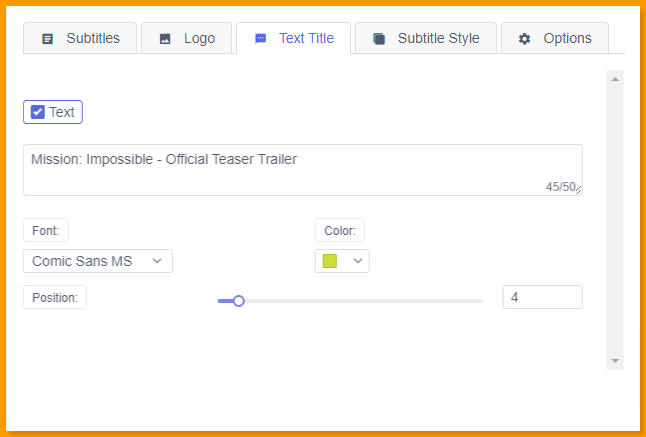
YouTubeの字幕を翻訳するのにEasysubを選ぶ理由は何ですか?
数ある字幕翻訳ツールの中で、なぜEasysubが突出しているのか?それは、AIによる自動翻訳に対応しているだけでなく、正確性、効率性、使いやすさ、専門的な機能など、総合的な性能がYouTubeクリエイターが字幕翻訳に求める高い基準を完全に満たしているからです。.
1. 高度なAIモデルに基づいて、高い精度
Easysub は、音声認識 (ASR) + 自然言語処理 (NLP) + 機械翻訳 (MT) 技術を包括的に適用し、字幕作成シナリオに最適化されています。
- さまざまなアクセント、話す速度、方言の音声コンテンツを正確に認識します
- 翻訳中に文脈上の意味を保持し、逐語的な翻訳を回避します
- 字幕のタイムコードを自動的に一致させてビデオとの同期を確保します
参照複数のサードパーティテストでは、Easysub は英語、日本語、韓国語などの主要な言語ペアで 90% を超える翻訳精度を達成し、汎用翻訳ツールを大幅に上回っていることが示されています。.
2. YouTubeの字幕ワークフローに最適化
Easysub は、YouTube と緊密に統合された字幕翻訳プロセスをサポートしています。
- ワンクリックインポート: YouTubeビデオリンクを直接入力して、オリジナルの字幕またはオーディオトラックをインポートします
- マルチフォーマットサポート: SRT、VTT、ASSなどの主流の字幕ファイル形式で出力します。
- フォーマット損失なし: 翻訳後も元の字幕のタイムラインとフォーマット構造が保持されます
つまり、クリエイターはタイムコードを手動で調整する必要がなく、大幅に時間を節約できます。.

3. 多言語一括翻訳で国際的なオーディエンスを拡大
YouTube チャンネルが世界中の視聴者をターゲットにしている場合、Easysub を使用すると字幕を複数の言語 (英語、スペイン語、フランス語、アラビア語など) に一度に翻訳できるため、動画をより多くの市場に届けることができます。.
- 複数の動画の字幕のバッチ処理をサポート
- 多言語バージョンを自動的に生成し、簡単に管理できるように分類します
4. 高度に制御可能な手動編集機能
AI翻訳は効率的ですが、正確性を確保するには手作業による校正が依然として重要です。Easysubは以下のメリットを提供します。
- リアルタイム字幕プレビュー: 動画を見ながら翻訳を編集
- 一括用語置換: キーワードを一括で統合
- スタイルのカスタマイズ:字幕のフォント、色、位置をビデオのスタイルに合わせて調整できます。
5. 透明な価格設定でコスト効率が高い
- 無料の割り当てがあり、初心者や小規模クリエイターが試してみるのに最適です
- プロフェッショナルパッケージは透明な価格設定を提供し、人間の翻訳者を雇う場合と比べて70%以上の節約になります。
- リソースの無駄を避ける従量課金モデル
結論
グローバルな動画制作の時代において、字幕翻訳はもはや単なる「あったらいい」というものではなく、異なる言語の視聴者をつなぐ架け橋です。コンテンツをより多くの視聴者に届けたい場合でも、チャンネルの専門性や国際的な影響力を高めたい場合でも、適切な字幕翻訳ツールを選ぶことは非常に重要です。.
Easysubを使えば、クリエイターはより短時間で低コストで、高品質な多言語字幕翻訳を実現できます。効率性を高めるだけでなく、字幕の正確性と読みやすさも確保できるため、YouTube動画を世界中の視聴者に届けることができます。.
次に試してみてはいかがでしょうか イージーサブ ご自身のために?AIを字幕作成の頼れるアシスタントとして活用すれば、あなたのコンテンツが言語の壁を乗り越え、より多くの視聴者に届くようになります。.
今すぐEasySubを使って動画をグレードアップしましょう
コンテンツのグローバル化と短編動画の爆発的な増加の時代において、自動字幕作成は動画の視認性、アクセシビリティ、プロフェッショナリズムを高めるための重要なツールとなっています。.
AI字幕生成プラットフォームでは、 イージーサブ, コンテンツ制作者や企業は、高品質で多言語対応の正確に同期されたビデオ字幕を短時間で制作できるため、視聴体験と配信効率が大幅に向上します。.

コンテンツのグローバル化と短編動画の爆発的な増加の時代において、自動字幕作成は動画の視認性、アクセシビリティ、そしてプロフェッショナリズムを高めるための重要なツールとなっています。EasysubのようなAI字幕生成プラットフォームを活用することで、コンテンツ制作者や企業は、高品質で多言語対応、かつ正確に同期された動画字幕を短時間で作成でき、視聴体験と配信効率を劇的に向上させることができます。.
初心者でも経験豊富なクリエイターでも、Easysubはあなたのコンテンツを加速させ、力強くサポートします。今すぐEasysubを無料でお試しください。AI字幕の効率性とインテリジェンスを体験し、あらゆる動画を言語の壁を越えて世界中の視聴者に届けましょう!
わずか数分で AI を活用してコンテンツを強化できます。
👉無料トライアルはこちらをクリックしてください: easyssub.com
このブログを読んでいただきありがとうございます。. ご質問やカスタマイズのご要望がございましたら、お気軽にお問い合わせください。
